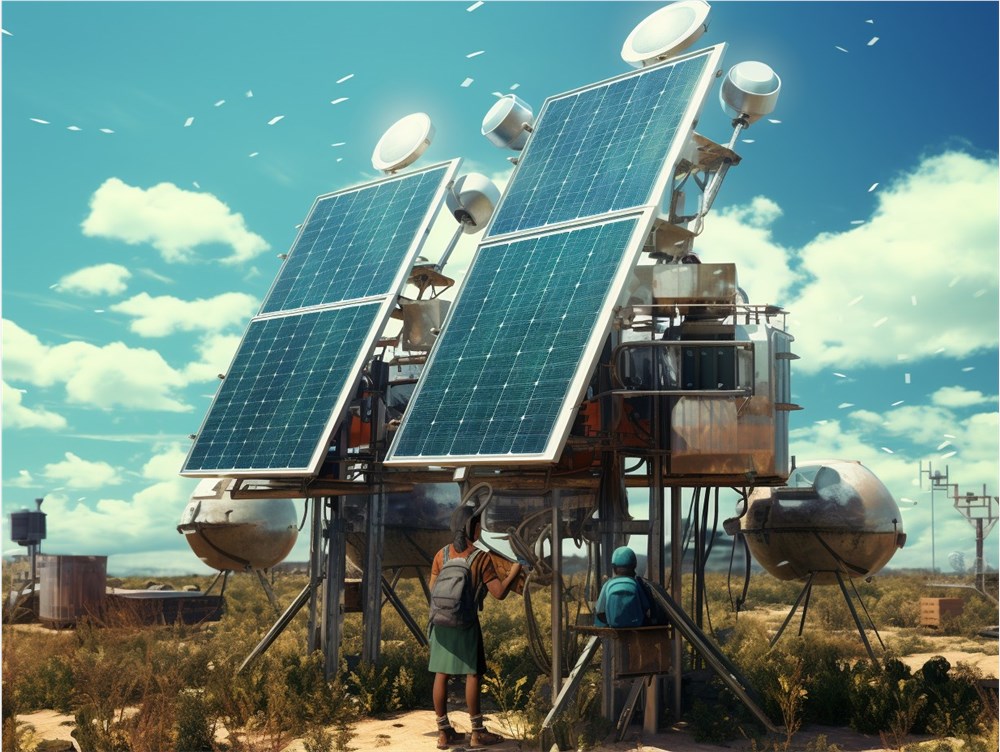The $100 billion Stargate project, jointly created by OpenAI, Oracle and SoftBank, aims to build large-scale data centers to promote the development of artificial intelligence. The project faces challenges of growing energy demand, and this article will analyze how the Stargate project responds to data center power shortages and the role of renewable energy in it.
The $100 billion Stargate joint project plans to source some of its electricity from solar and batteries. According to Bloomberg, the project's renewable energy facility will be built by SoftBank's SB Energy, but it is not the only source of energy for the project.
Stargate is a collaboration between OpenAI, Oracle and SoftBank Group to build a large number of new data centers to promote the rapid development of artificial intelligence applications.

Image source notes: The image is generated by AI, and the image authorized service provider Midjourney
In recent years, the booming development of cloud computing and artificial intelligence has made developers and technology companies rush to seize power resources. The U.S. Department of Energy expects that by 2028, data center electricity consumption may account for 12% of all U.S. electricity production, compared with only 4.4% in 2023. Faced with the upcoming power shortage, 50% of new data centers are expected to face the dilemma of insufficient power by 2027.
Among data center developers and technology companies, nuclear energy has become a popular choice. Google signed a 500-megawatt partnership with nuclear power startup Kairos, while Microsoft plans to restart a deactivated reactor on San Mile Island. In addition, data center operator Switch also reached a 12-gigaW cooperation agreement with small modular reactor company Oklo last year.
However, historical problems in nuclear energy projects are emerging one after another, and they are facing the trouble of cost overruns and project delays. While emerging nuclear energy startups are committed to overcoming these problems through modular production and simplified approval processes, no company has completed reactor construction so far, and the first commercial reactors are expected to be put into operation until 2030, which will mitigate the near-term The energy shortage is hardly helpful.
In contrast, solar and wind energy are built significantly faster. Research shows that solar projects are usually shortened to about 18 months compared to nuclear and gas power plants. Because solar projects have certain modular characteristics, they can start generating electricity before the entire project is completed.
In solar projects, the most time-consuming link is often the permitting and grid connection stage. For data centers, grid connection is sometimes not necessary, and many data centers can directly obtain power from the power source. Given the urgency of the Stargate project, the relevant licensing process is also likely to accelerate, so solar energy is the most likely source of electricity for the first data centers.
Points:
The Stargate project will have part of its electricity from solar and batteries, aiming to build a new data center.
Data center electricity demand surges and is expected to account for 12% of total U.S. electricity in 2028.
Compared with nuclear energy, solar energy is built faster and is expected to meet power demand faster.
To sum up, the Stargate project’s choice of solar energy as part of the power source reflects its emphasis on rapid deployment and response to energy shortages. This provides reference for other large-scale data center projects and highlights the key role of renewable energy in future technological development.